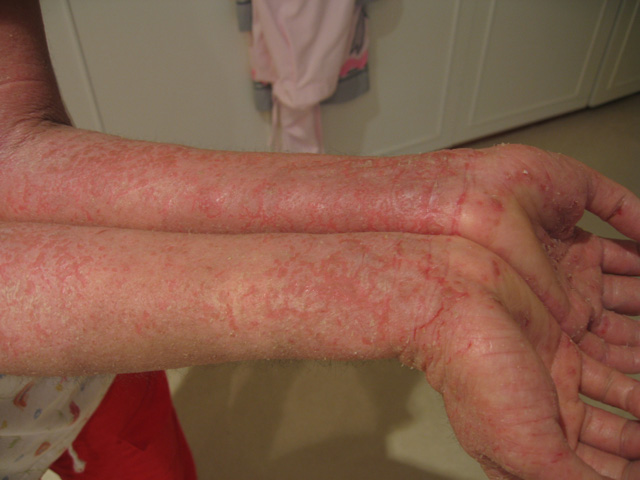A potential new target for the treatment of eczema has been found by researchers at Boston Children's Care Hospital.
Fifteen per cent of children suffer from eczema, or atopic dermatitis, a debilitating and potentially disfiguring skin condition.
 In the condition, immune T cells, a type of white blood cell, invade the skin and secrete substances that produce an allergic response and itchy skin.
In the condition, immune T cells, a type of white blood cell, invade the skin and secrete substances that produce an allergic response and itchy skin.
The scientists showed that scratching the itchy skin increases the severity of the condition by encouraging an influx of other immune cells called neutrophils.
The neutrophils secrete a fat, or lipid molecule called leukotriene B4, that attracts more neutrophils and the potent T cells.
These cells aggravate the skin further by causing skin inflammation. By blocking these cells from entering the affected area, the disease can be slowed down or even stopped entirely.
Previous to this study, published in October's Immunity, a Cell publication, little was known about the role of leukotriene B4, but scientists suspected that its production was recruiting T cells to the scratch site.
Using a mouse model of eczema, the team used a drug that blocked the leukotriene B4 and this was found to block the development of an allergic skin inflammation. In addition, they found that deleting the receptors for leukotriene B4 on the immune cells themselves had a similar effect.
These findings suggest that the neutrophils that secrete the leukotriene B4 play a key role in skin inflammation and that a new therapy for Excema could be developed, targeting the production of or response to, these cells.
- Previous How a Fish broke the Laws of Physics
- Next Gut viruses trigger AIDS










Comments
Add a comment